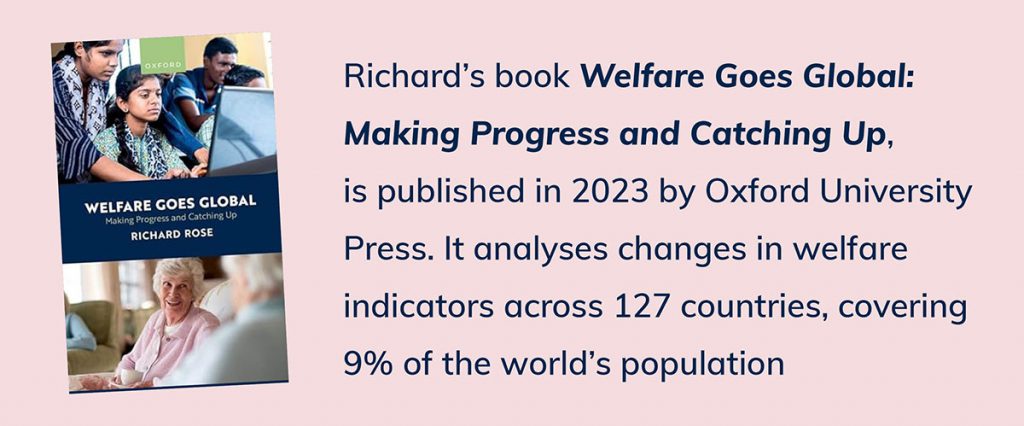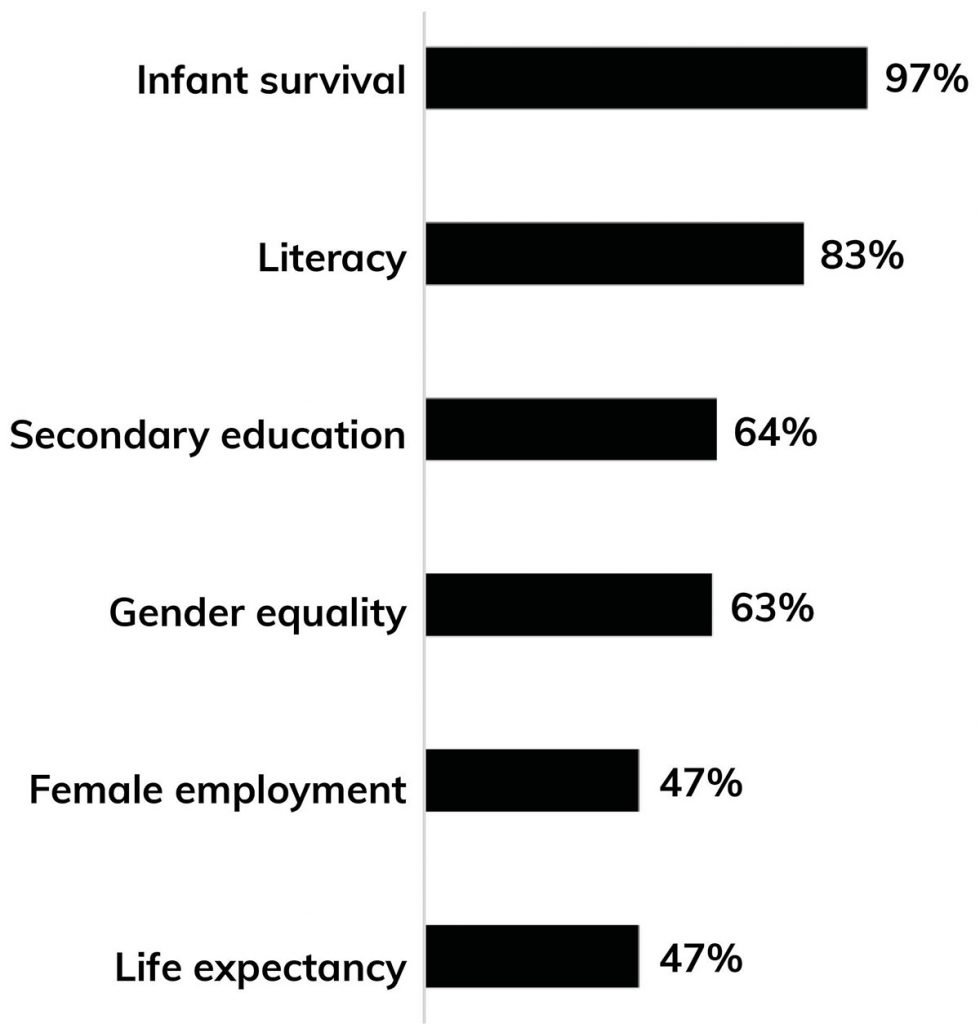Richard Rose has conducted a breathtakingly comprehensive analysis of the state of welfare around the world. Here, he provides a succinct summary of his findings – for countries and for people
Welfare can refer to the circumstances of people or of states. Most political scientists focus on a limited minority of the world’s countries that are welfare states, especially those in Scandinavia.
However, these states contain far less than one per cent of the world’s population. By contrast, United Nations data focuses on the welfare of the world’s eight billion people.
The conclusions we draw about welfare depend on whether we count people or states.
A majority of people in the world today have achieved a global standard of welfare, but only a minority of states have done so.

This is because the states with the highest percentage of people at global standards tend to be low in population. European welfare states contain only five per cent of the world’s population. By contrast, none of the world’s seven most populous countries, six in developing continents plus the United States, is a welfare state. The minority of healthy and educated people who live in India, population 1.4 billion, outnumber the total population of European welfare states.
In a global perspective, many achievements of European welfare states, such as the virtual abolition of illiteracy and infant mortality, cannot be taken for granted. Since these are fixed standards, this makes it possible for countries to catch up with these targets sooner or later.
My research sets global standards of health, education and female employment at the median in the continent that is highest globally at a fixed point in time. This is usually a non-geographical continent consisting of countries with highly developed economies. While most of these countries are European welfare states, most of the group’s population is in North America, Japan, the Republic of Korea or Australia. Female employment is highest in Africa, where women as well as males often start work young and continue until they die since they cannot afford secondary school or a pension.
There is nothing inherently statist in the achievement of individual welfare. Individual conditions reflect the interaction of three institutions in a country’s welfare mix: the household, the economy, and the state.
For millennia before the creation of welfare states, the household was the chief source of a person’s education, healthcare and employment. The household remains very significant today in low-income countries. Moreover, in welfare states, parents influence health, education and vocational aspirations, and women spend many hours each week as unpaid carers for family members.
Three different economies influence individual welfare: activities officially recorded in the national accounts, cash-in-hand activities outside official economic statistics, and the household production of services and goods without money changing hands.
The relative importance of these activities varies within and between countries differing in development. It pays people to earn their income in the official economy when healthcare and pensions are linked to employment. Where such benefits are limited or absent, it pays individuals to be employed off-the-books, thereby avoiding taxes. In rural areas, households can grow much of their own food and sell the surplus cash-in-hand at local markets.
Big majorities of people are at global standards in terms of health in infancy, literacy, secondary school education and gender equality. See the graph below. Life expectancy, however, is a moving target. It is therefore harder for people who have long lives in developing countries to catch up with rising standards in developed countries. Cultural values prevent a big majority of women from being officially employed in Muslim societies such as Iraq and Iran, where traditional Islamic norms still prevail. The situation is different in Turkey and the nominally Muslim Central Asian -stans. In predominantly Hindu India, female employment is also very low.

A dozen developing countries scattered across four continents are positive outliers. Welfare is substantially higher than predicted by regressions taking development indicators, culture, and political institutions and corruption into account. China is the leading example of a country high in national achievement. A dozen countries ranging from Pakistan and Liberia to Romania are negative outliers. They have a lower level of welfare than their resources predict. India is a leading example of this group.
If aid agencies such as the World Bank wanted to concentrate on raising the welfare of the world’s population, they would not disperse money to a hundred countries. Agencies would have a bigger impact on people if they concentrated on very populous countries such as India, Pakistan and Nigeria – and, of course, if those countries' governments then spent the money in response to their voters’ wishes and without corruption.